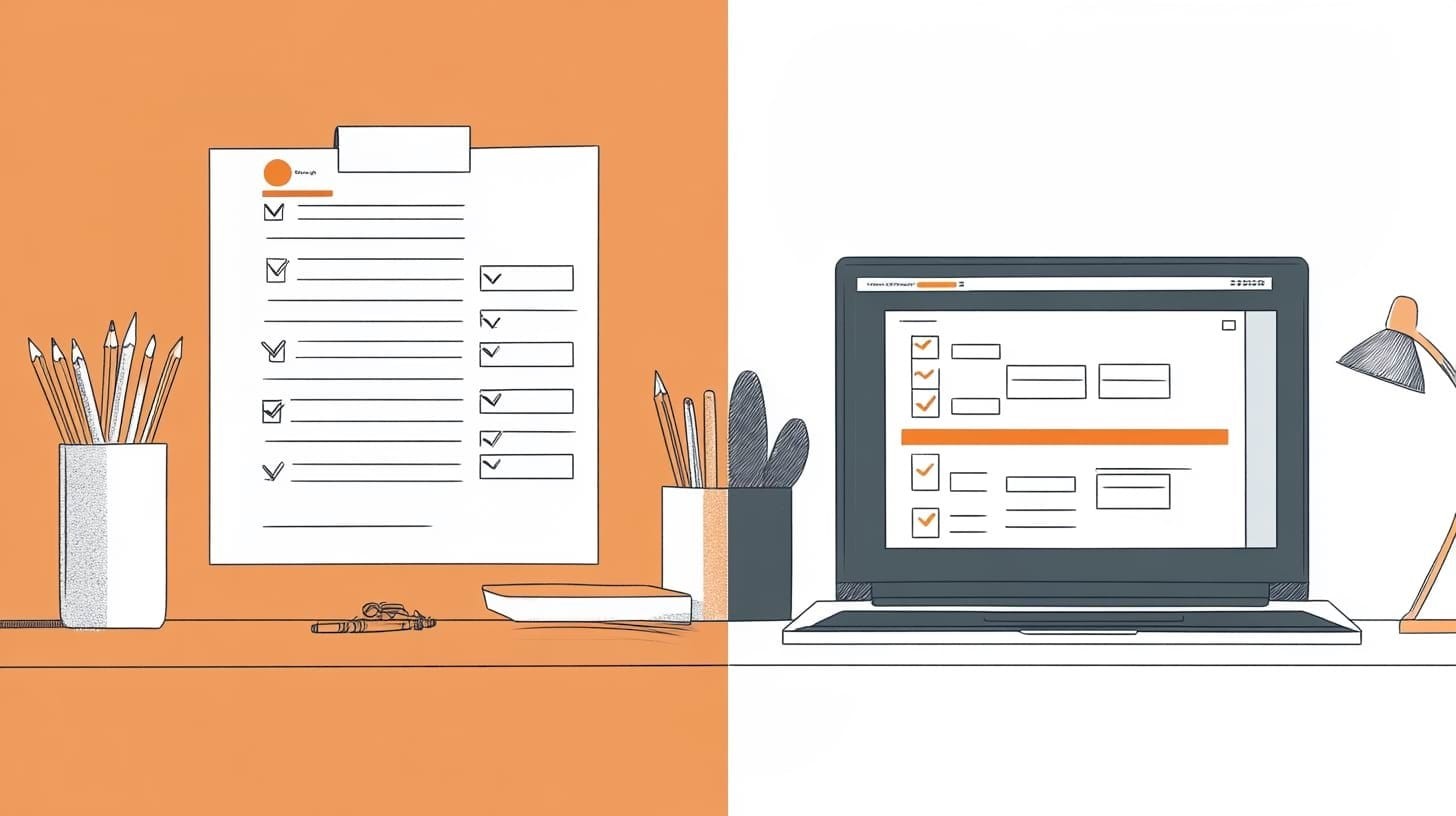Call Sheets vs. Manual Creation: Why Automation Saves Time and Stress
On set, production coordinators worldwide face wrestling with spreadsheets and phone lists to create call sheets before cast and crew arrive. This administrative tightrope walk devours precious hours and invites costly errors that ripple through production schedules like dominoes.


Call sheets are the backbone of any production day that keep teams in sync and on schedule. Paper-based methods were once the go-to choice, but automated call sheets are changing the way production teams handle their daily scheduling and communication.
The digital world now offers a range of tools that boost team communication and cut down delays on set. These solutions make creation faster, remove human errors, and give everyone on the production access to the latest updates. But production teams often find themselves torn between their trusted manual methods and new automated options.
Production managers need to know how automation affects their time management and reduces stress levels. This piece gets into the differences between automated and manual creation to help teams pick the right approach for their production workflow.
Current Challenges in Call Sheet Creation
Production teams face major challenges with manual call sheet creation that affects their efficiency and coordination. Even the best-planned shooting schedules can go off track because of obstacles teams encounter regularly.
Production Delays from Manual Errors ⏳
Creating call sheets by hand takes too much time and requires extreme attention to detail. Production coordinators waste valuable hours to collect and organize information from teams of all sizes. On top of that, it increases error risks in vital details like call times, locations, and contact information when data is entered manually.
Last-minute changes create the biggest problem. Production coordinators get updates right before distribution and must quickly modify call sheets. This rushed process often leads to mistakes with spreadsheet or paper-based systems.
Manual creation makes version control especially difficult. Cast and crew might use outdated information when multiple versions of a call sheet are floating around, which causes confusion and delays on set.
Communication Gaps in Traditional Methods 📞
The way call sheets are shared creates major communication roadblocks. Important updates get buried in busy inboxes with email distribution. Production coordinators also find it hard to track who has seen and reviewed the call sheet.
Call sheet distribution timing brings its own set of challenges. Production teams struggle with:
- Late-night distribution after wrap
- Limited time to review details
- Difficulty confirming receipt from all team members
- Challenges in communicating last-minute changes
There's another reason why manual call sheets fall short - they lack real-time updates. Changes after distribution need new versions that might not reach everyone quickly. Team members might show up at wrong times or locations because of this communication gap.
Getting confirmations for traditional call sheets is a real headache. Production coordinators must chase down each person who hasn't confirmed, which wastes time and creates an inefficient workflow. This manual tracking leaves uncertainty about whether team members have received and understood their schedules.
How Call Sheet Automation Works
Modern call sheet automation platforms simplify production workflows through digital systems. These solutions have detailed features that improve efficiency and reduce common production challenges.
Digital Template Systems 📝
Advanced call sheet software employs intelligent templates to automatically fill in essential production details. These systems blend with scheduling data and pull in scene information, cast details, and crew assignments automatically. The templates have built-in error detection to catch mistakes in critical information like call times and locations.
Production teams can customize templates for their specific project needs, from feature films to commercial shoots. The software handles formatting, department hierarchies, and position ordering automatically, which eliminates manual tasks.

Cloud-Based Distribution ☁️
Digital distribution systems have transformed how call sheets reach production teams. Cloud-based platforms deliver content instantly through email and SMS, which ensures better reach and faster communication. These systems track delivery status so production coordinators can monitor when recipients view and confirm their call times.
Cloud platforms maintain a single source of truth instead of creating version confusion. Updates appear immediately on all devices, which removes the need for multiple versions. Production teams can add special announcements or last-minute changes that update instantly for all recipients.
Mobile Access Features📱
Modern call sheet platforms make mobile access a priority by optimizing information display for smartphones and tablets. Recipients can view their personalized call times, locations, and production details through accessible interfaces. The software has interactive elements like:
- Tap-to-call contact directories
- One-click map navigation
- Real-time weather updates
- Instant confirmation capabilities
Mobile optimization goes beyond basic viewing - crew members can manage and update call sheets directly from their devices. Some platforms offer companion mobile apps that provide enhanced functionality with instant notifications and real-time updates. This mobile-first approach keeps essential production information available throughout the shooting day, whatever the location or circumstances.

Future of Call Sheet Management
Technology advances are changing call sheet management faster than ever. Production teams now see a complete transformation in how they handle their daily scheduling tasks as AI and cloud computing become more sophisticated.
AI-Powered Scheduling 🤖
AI has changed how production teams create call sheets by using smart algorithms to optimize shooting schedules.
Integration with Production Software 🔗
Call sheet platforms now work smoothly with existing production tools. Teams can import data directly from scripts to automatically fill call sheets with the right scheduling details. The platforms offer more than just scheduling:
- Automated script breakdowns
- Up-to-the-minute budget tracking
- Resource allocation optimization
- Instant production report generation
Mobile-First Solutions ✨
Mobile access shapes the future of call sheet management. About 10 billion IoT devices connect to the internet today, and experts predict this number will reach 25.4 billion by 2030. This growth pushes developers to create mobile features that change how production teams work with call sheets.
Production coordinators can now access data from anywhere using any device. Teams track updates in real-time and get instant confirmations from crew members. The mobile platforms let coordinators update call sheets right from their phones, so important production details stay available whatever their location.
These tech advances make call sheet management simpler and more user-friendly. AI integration and reliable mobile solutions create new standards for production coordination and team communication.
Comparison Table
| Feature | Manual Call Sheet Creation | Automated Call Sheet Systems |
|---|---|---|
| Creation Process | Manual data entry takes time and needs organization from multiple departments | Digital templates and scheduling tools populate data automatically |
| Error Management | Manual errors often occur in vital details with poor version control | System detects errors and formats positions automatically |
| Distribution Method | Email distribution often gets buried in inboxes | Cloud systems deliver instantly through email and SMS with tracking |
| Update Handling | New versions need creation and distribution which delays updates | Changes sync immediately on all devices from a single source |
| Accessibility | Only available in paper or simple digital formats | Mobile interface offers tap-to-call, navigation and weather updates |
| Communication Features | Teams need individual follow-ups and receipt confirmation | System tracks viewer status and confirms delivery instantly |
| Time Efficiency | Data collection and organization takes hours | Teams save handling time |
| Version Control | Multiple versions create confusion | Everyone sees one updated version |
| Team Coordination | Information sharing gaps cause delays | Teams get immediate notifications and updates |
| Mobile Integration | None or minimal | Complete mobile access with apps and immediate features |
Call Sheets Reinvented: The Role of Automation in Modern Production Workflows
The overwhelming evidence confirms that call sheet automation represents an incremental improvement and transformation in production management.
Filmustage scheduling system with integrated call sheets exemplifies this evolution, offering a sophisticated yet intuitive solution to age-old production challenges. By automatically harvesting the latest data from scheduling modules and crew information, it generates precise, up-to-date call sheets with minimal human intervention - effectively eliminating the error-prone administrative bottlenecks that have historically plagued production workflows.
This automation delivers multifaceted benefits extending far beyond mere time savings:
- Real-time crew alignment ensures everyone accesses identical, current information
- Rapid adjustment capability when inevitable schedule changes occur
- Smart templates that maintain consistency while allowing customization
The platform's development roadmap further demonstrates its commitment to comprehensive call sheet management, with a customizable call sheet builder that adapts to production-specific requirements.
Perhaps most telling is that these advantages scale across production sizes - from indie projects operating with skeleton crews to major feature films coordinating hundreds of personnel. The universal applicability underscores that this isn't about technological complexity but rather about fundamental workflow optimization. Filmustage's call sheet tool effortlessly convert your shooting schedule into a precise, fully tailored call sheet. It allows to customize every detail to match your production needs, from crew and project info to exact call times, locations, and weather updates and adapt and refine layouts seamlessly, keeping every element aligned for a smooth workflow.

As AI-powered scheduling and deeper integration with production software continue advancing the field, the lingering debate between manual and automated approaches increasingly resolves to a single question: why choose familiar inefficiency over proven optimization? For production coordinators seeking to reclaim countless hours while simultaneously reducing both stress and errors, automated call sheet systems like Filmustage's represent not just a logical choice but an essential evolutionary step in production management.
The dawn breaking on set no longer needs to signal the start of a coordination nightmare—it can instead mark the beginning of a smoothly orchestrated production day, with everyone precisely where they need to be, exactly when they need to be there.
From Breakdown to Budget in Clicks
Save time, cut costs, and let Filmustage’s AI handle the heavy lifting — all in a single day.